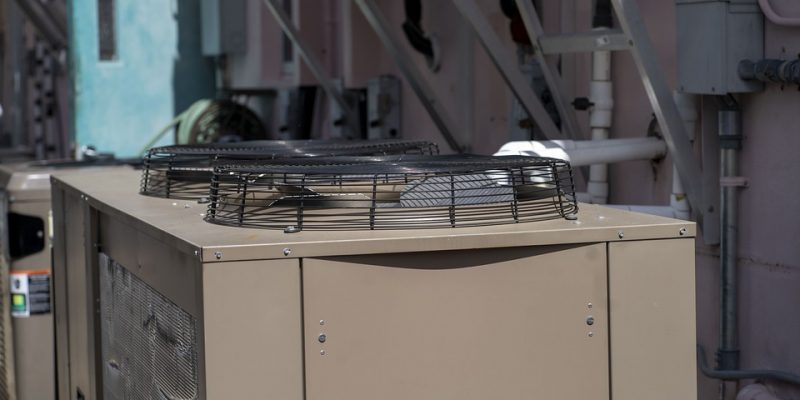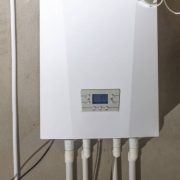As seasons and the weather start to change, it’s important for homeowners to take care of their HVAC systems. Regular maintenance on your system will not only save you money in the long run, but keep your home comfortable throughout the year.
From cleaning filters and coils, sealing ducts, checking refrigerant lines and more—this comprehensive guide can give you all the information you need to get started on seasonal HVAC maintenance.
Read on for everything necessary when doing proper upkeep on your central heating or cooling system!
If you live in Spencer, Oklahoma and are looking for HVAC professionals to service your system, consider Smart Air Solutions. After all, seasonal HVAC maintenance means having your system checked over on a regular basis.
Clean or replace your air filters
One of the most important tasks to complete during seasonal HVAC maintenance is cleaning or replacing air filters. Air filters capture dust, dirt, and other particles from your home’s air supply before it enters the system.
If you have an older system, you may need to replace your filter more often than newer models. Dirty filters not only impact air quality in your home, but can cause a decrease in energy efficiency. Check your manufacturer’s recommendation for the type and frequency of replacement.
Clean and unclog condenser coils
Condenser coils are located outside of your home and can become clogged with dirt and debris. To keep your system running efficiently, it’s important to clean the condenser coils periodically.
Start by turning off the power to your outdoor unit and using a garden hose to spray the coils. Then, use a soft brush or cloth to remove any buildup of dirt or debris. It’s important not to use anything too abrasive on the system since you can damage the coil fins.
Seal ductwork and replace insulation
Your home’s ductwork can be a major source of energy loss and air leaks if it is not maintained properly. Take the time to inspect your ducts for any signs of damage or wear and tear. Make sure there are no gaps in between sections, and use caulk or mastic sealant to fill any cracks.
In addition, replace worn-out insulation around the ducts to help keep air from escaping. Look for areas that don’t seem to be properly insulated, and add more material if necessary.
Check refrigerant lines for leaks
You should also check your HVAC system’s refrigerant lines for signs of leakage or breaks. A leaking line can cause a decrease in energy efficiency, as well as potentially hazardous conditions.
It’s important to speak with a professional if you notice any signs of damage or leakage. They can properly assess the situation and provide the necessary repairs.
Inspect fan blades and adjust belts
Another step in seasonal HVAC maintenance is to inspect the fan blades and adjust any loose belts. This will ensure that your system runs efficiently by improving airflow in your home.
Start by inspecting the fan blades for signs of wear or damage, and make sure they are free from dirt or debris buildup. If you have a belt-driven system, make sure the belt is properly tensioned and not loose. If necessary, you can use a belt-tensioning tool to adjust it.
Inspect your outdoor unit for debris and obstructions
Inspect the outdoor unit for debris and obstructions that may be blocking airflow. Remove any leaves, sticks, or other objects from the area so that the system can run efficiently. You should also trim any shrubs or trees near the unit to prevent future buildup of debris.
Check the wiring and connections on your indoor unit
Inspect the wiring and connections on your indoor unit for any signs of wear and tear. Make sure that all wires are securely attached to the terminals, and replace any frayed or damaged wires. This can help reduce the risk of electrical problems in your system.
Test your thermostat to make sure it’s working properly
Another step in seasonal HVAC maintenance is to test your thermostat. Make sure it’s working properly and is able to accurately read the temperature in your home. If you have an older thermostat, it may be time to replace it with a newer model for improved accuracy.
Check your thermostat setting to make sure it’s set correctly. If the temperature and time aren’t set correctly, your system won’t be able to function properly. You should also check the batteries in your thermostat and replace them if necessary.
Schedule a yearly maintenance check with a professional HVAC technician
Finally, it’s important to schedule a yearly maintenance check with a professional HVAC technician. They can inspect your system to make sure everything is running properly and efficiently. They can also check for any potential issues that may need to be addressed, such as a faulty fan motor or a leaking refrigerant line.
A professional technician can also check and adjust the settings on your thermostat to make sure it’s running correctly. And they can also provide any necessary repairs or replacements to ensure the optimum performance of your HVAC system.
Conclusion
Seasonal HVAC maintenance is an important part of keeping your system running efficiently and safely. Taking the time to inspect, clean, and adjust components can help extend the life of your system and save you money on energy costs.
When in doubt, consult a professional technician to ensure proper maintenance and operation of your HVAC system. Taking good care of it now will ultimately save you money in the long run.




















